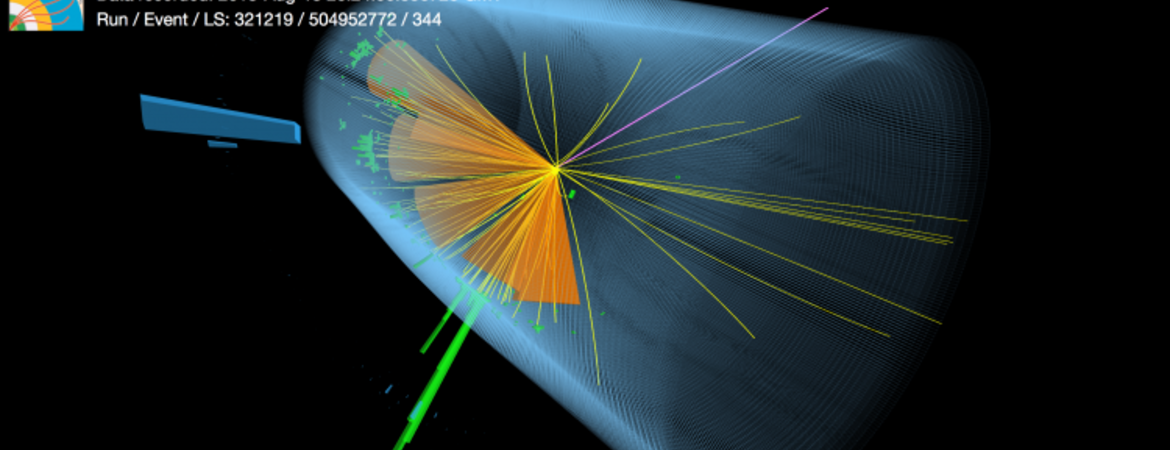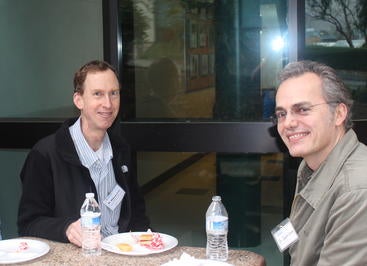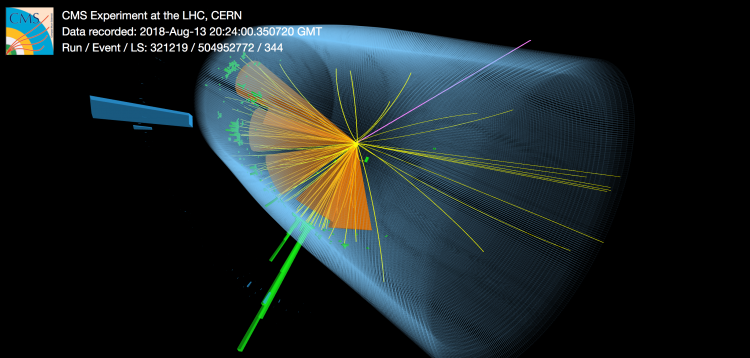
Physicists Bill Gary and Owen Long, members of the Compact Muon Solenoid, or CMS, Collaboration at the Large Hadron Collider, or LHC, at CERN, recently completed a “legacy” analysis from the LHC Run 2, the first high-energy run of the LHC. The CMS experiment is a large particle-capturing detector at CERN.
The research paper has been submitted for publication to the Journal of High Energy Physics. Run 1 of the LHC covers 2011 and 2012 data. Run 2 covers 2015-2018 data. The legacy from Run 2 refers to 2016-2018 data. The CMS detector amassed a large amount of data from collisions starting in 2016 and taking place through the end of 2018. This data allowed CMS physicists like Gary and Long, both professors of physics and astronomy at UCR, to classify measurements according to interesting features they observed in the collisions.
“The paper represents the culmination of about 10 years’ work,” Gary said. “There won’t be data to substantially improve this particular result until perhaps 2027 or so. The end of Run 2, a major milestone in particle physics, is the end of the first grand phase of the LHC and a time to reflect on what has been learned.”
The LHC, currently in a shutdown, will not start again until 2021.
The Standard Model of particle physics is the best explanation to date for how the universe works at the subnuclear level and has proven to explain correctly the elementary particles and forces between them.
“The problem is this model works too well,” Gary said. “We need the model to break down somewhere, find places where its predictions disagree with experiment, so that we can learn which direction to pursue to elucidate the deeper theory.
This is the main goal at the LHC: to find evidence for physics beyond the standard model, hopefully through the direct observation of new particles. Essentially all theories of physics beyond the Standard Model predict new particles.”
Gary explained that the Standard Model does not explain dark matter. But supersymmetry, or SUSY, a theory of physics beyond the Standard Model, does offer a candidate: the lightest supersymmetric particle, which is stable, electrically neutral, and weakly interacting in most variants of supersymmetry.
In SUSY, each particle in the Standard Model is assigned a supersymmetric partner, with each supersymmetric partner differing from its Standard Model counterpart by one-half unit in spin. The searches for supersymmetric particles have been one of the main areas of research at the LHC since data taking first began in 2010.
“The dark matter candidates produced in supersymmetry events exit the CMS detector without leaving a signal,” Gary said. “In other words, we see unbalanced momentum in the event, corresponding to the unseen dark matter candidate. This is the ‘missing momentum.’ The idea is to measure the number of events we record that have very large missing momentum and compare this with the number of such events that are expected in the Standard Model. To find the dark matter candidate, we look for a significant excess of events with large missing momentum compared with what is expected in the Standard Model.”
Gary added that they are now working on new methods to search for new symmetries of the basic building blocks of matter.
“We hope these studies will reveal the deeper, more fundamental laws of nature — beyond the Standard Model,” he said.
UCR is a founding member of the CMS experiment — one of only five U.S. institutes with that distinction. Gary is one of the original signatories.

